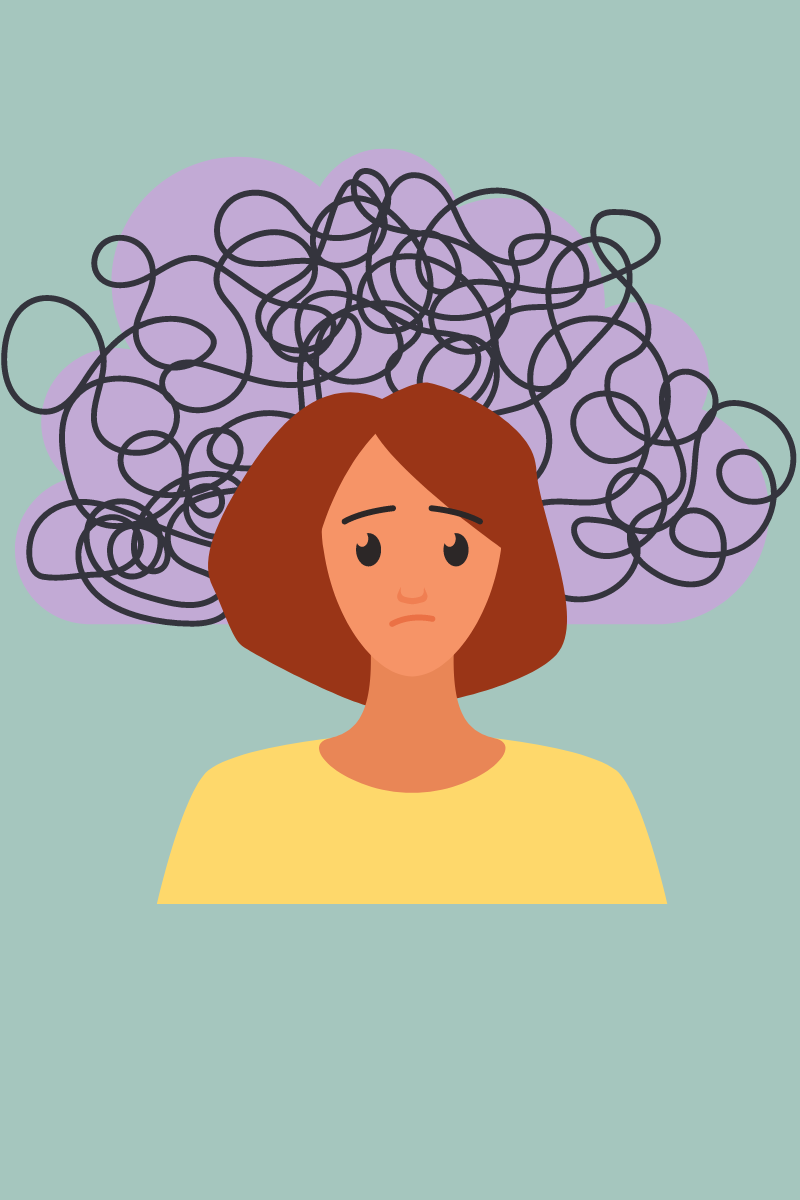When I was diagnosed with Premenstrual Dysphoric Disorder (PMDD) two years ago, it
didn’t exactly come as a surprise to me. Like many others who suspect they might have
this misunderstood, lonely, and often debilitating disorder, I had done a lot of research
on my own before receiving a medical diagnosis.
For years, I noticed a pattern of changes in my mental and physical health around 2-2.5
weeks before my period was expected. I would chalk it up as “PMSing” at the time, but
something still felt incredibly off – why did I feel like a different person for basically half of
the month, every month? Why did my PMS symptoms seem so long and intense
compared to others? My family doctor didn’t seem to have many answers for me – I was
prescribed medication for depression and anxiety, and other than that, I was basically
told that I am a woman with a menstrual cycle…PMS is “normal” and “every woman will
most likely experience it at some point in their lives”. Despite trying a handful of different
prescription medications, I didn’t find much relief. Around ovulation every month, the
symptoms would reappear, and like clockwork, the cycle would begin again.
For those who are unfamiliar with PMDD, the International Association for Premenstrual
Disorders (IAMPD) describes PMDD as a “cyclical, hormone-based mood disorder with
a cluster of symptoms arising during the premenstrual or luteal phase of the menstrual
cycle and subsiding within a few days of menstruation”. PMDD is a much more severe
form of PMS that causes significant distress and disrupts one’s daily life and functioning.
While hormones play a significant role in PMDD, it’s not a hormonal imbalance, but
rather an abnormal reaction in the brain to normal hormonal changes.
Since there’s no blood test or saliva test for diagnosing PMDD, you have to track your
symptoms daily for two months using a chart similar to this one. Symptoms must show a
pattern in the majority of monthly cycles to meet the diagnostic criteria for PMDD
outlined in the Diagnostic and Statistical Manual of Mental Disorders (DSM-5).
Symptoms for PMDD can range far and wide, but for me, symptoms start to show up
around day 10 of my cycle and typically include:
A sudden change in mood and perspective
Overwhelming feelings of anxiety, hopelessness, anger, and dread
Extreme irritability and feeling on edge and/or out of control
Low energy, exhaustion, and desire to stay in bed
Brain fog and difficulty finding words
Difficulty concentrating and staying motivated
Increased sensitivity to rejection
Physical symptoms such as bloating, muscle cramps, joint pain and
inflammation, migraines (with aura), flare-ups of Raynaud’s phenomenon, hot
flashes, weight gain, trembling, thinning hair, light-headedness, and nausea.
The good news is that once my period arrives, the symptoms disappear almost
immediately. The bad news is, since PMDD is a cyclical mood disorder, I spend a lot of
my “good days” dreading and fearing the cycle restarting again. Although I haven’t
mastered PMDD yet, some things that have been helpful for me in managing the highs
and lows are:
Tracking my symptoms: Tracking my symptoms leading up to my toughest days
allows me to anticipate when I might need extra support and understanding. I’ve found
that by openly discussing my experiences with PMDD (which isn’t always easy), it
allows others to know what I’m going through and offer empathy and assistance (if
needed) during my most challenging times.
Seeing a therapist: Weekly therapy sessions have become a cornerstone in my
journey with PMDD. Seeing a therapist has given me a dedicated safe space to talk
about the emotional rollercoaster that comes with this disorder. My therapist’s empathy
and guidance have helped me to develop healthier coping strategies to better navigate
the highs and lows.
Self-care: I’ve realized how important it is for me to acknowledge the impact PMDD has
on my life and to give myself the compassion, love, and patience that I deserve when
I’m struggling. Taking time to slow down and rest, and doing things like yoga, spending
time outdoors, and meditation have been really beneficial for me.
My PMDD journey hasn’t been easy, but educating myself on the disorder and giving
myself grace has allowed me to navigate the challenges with a bit more resilience and
hope. I hope that by talking openly about my experience I can help spread awareness
and help others feel less alone.
If you think you might have PMDD, IAPMD is a great resource, and even has an online
self screening tool that you can take.
References
https://www.aafp.org/pubs/afp/issues/2016/0801/p236/jcr:content/root/aafp-article-
primary-content-container/aafp_article_main_par/aafp_tables_content1.enlarge.html
International Association for Premenstrual Disorders. IAPMD: Helping those affected by
premenstrual disorders. https://iapmd.org/
Paige is an advanced practicum student at The Cove. She’s going into her final year in the Bachelor of Applied Science in Community Social Services program at the University of Guelph-Humber. She is passionate about mental health, specifically in the relationship between women’s hormonal fluctuations and mental well-being. If you ever engage in a conversation with Paige, don’t be surprised if she asks you what your zodiac sign is.

